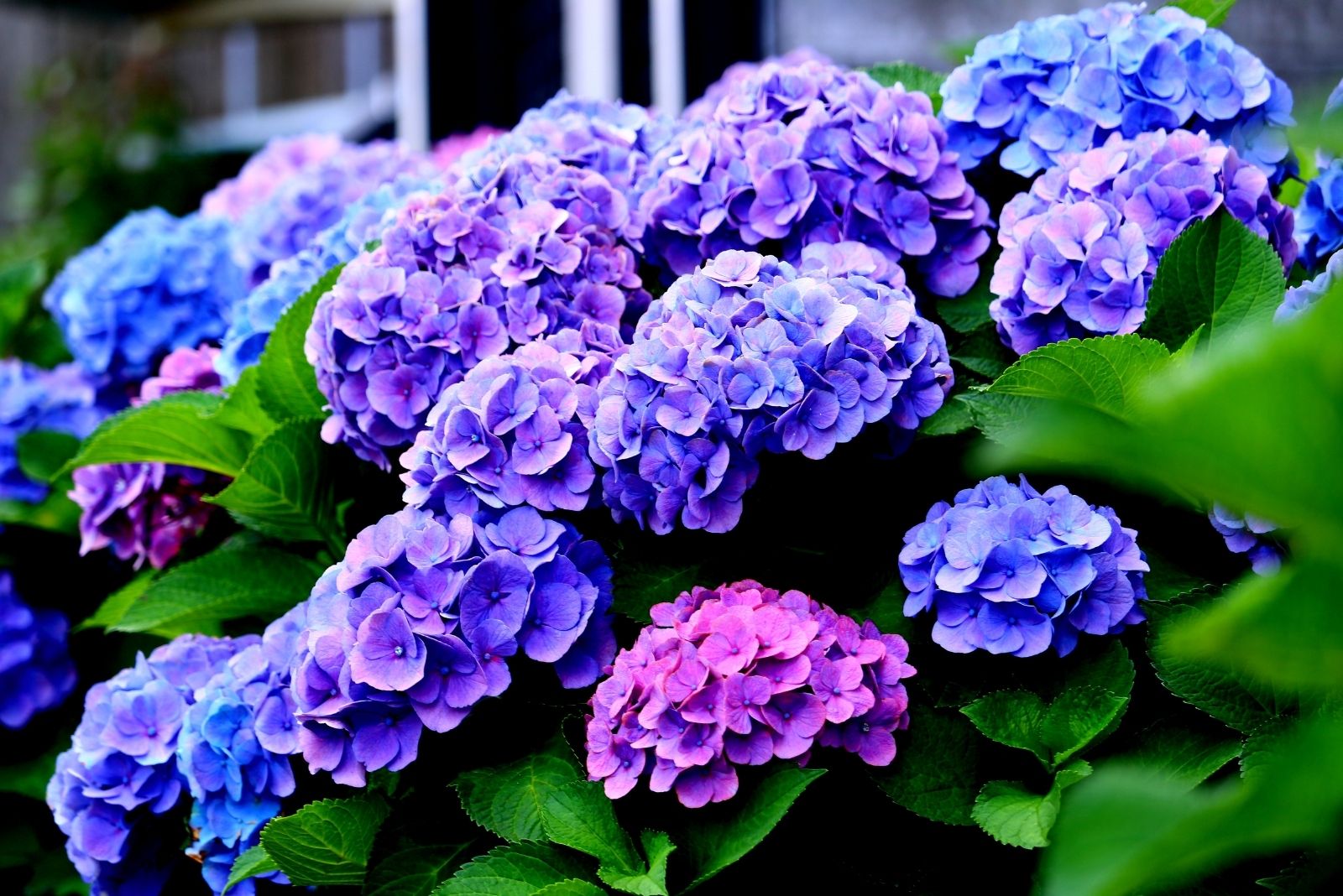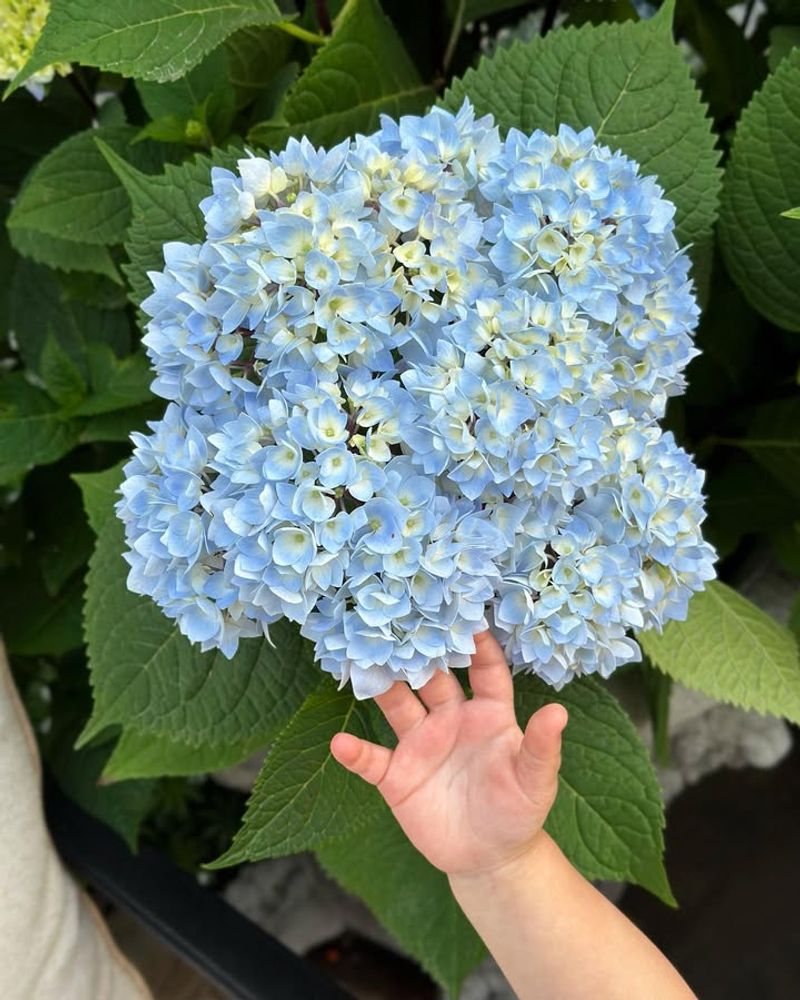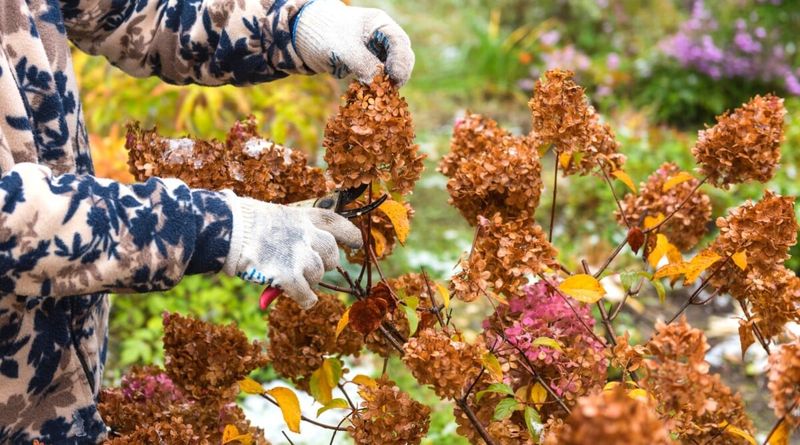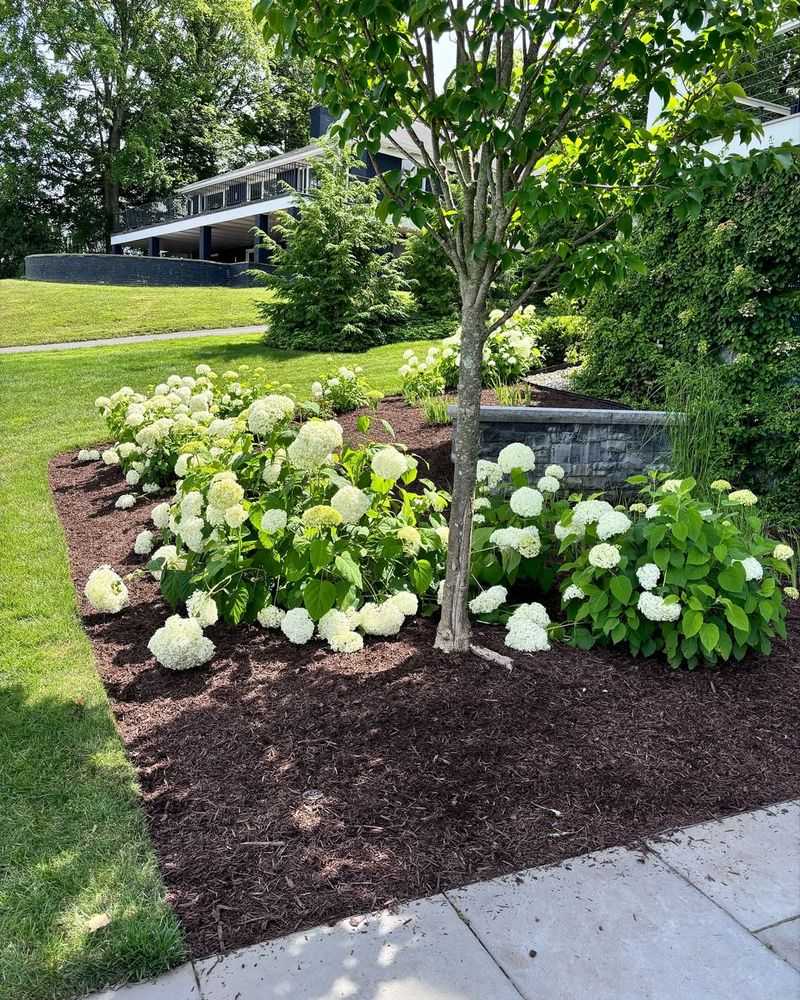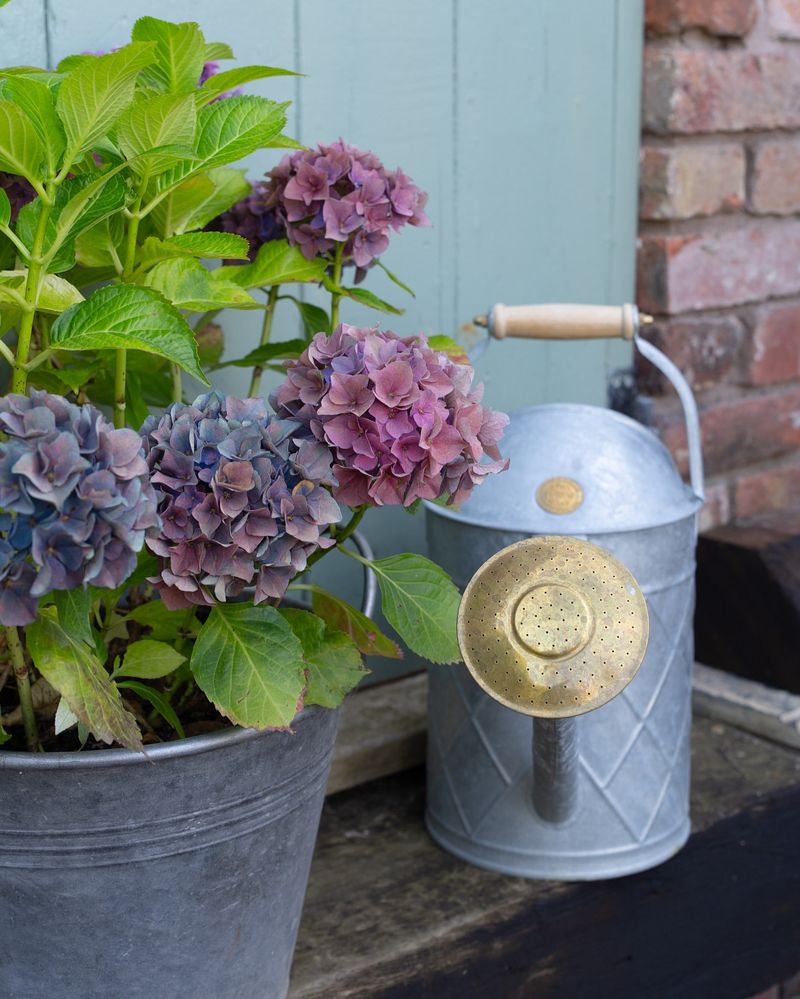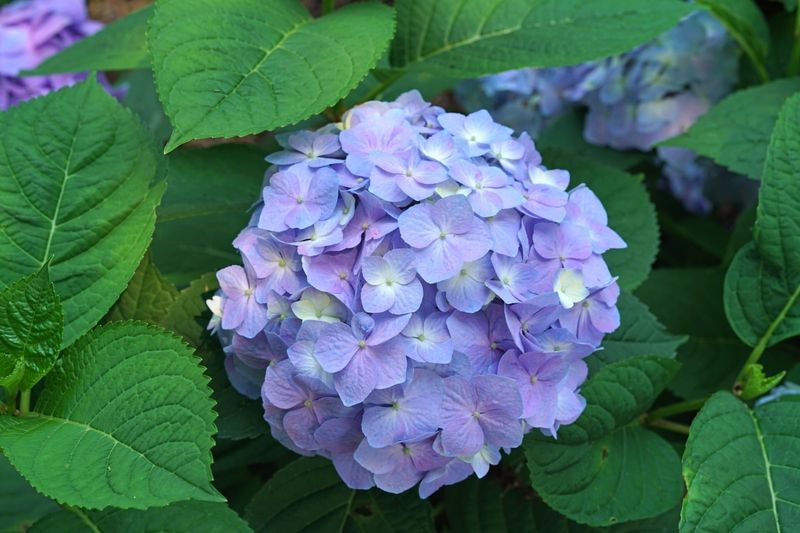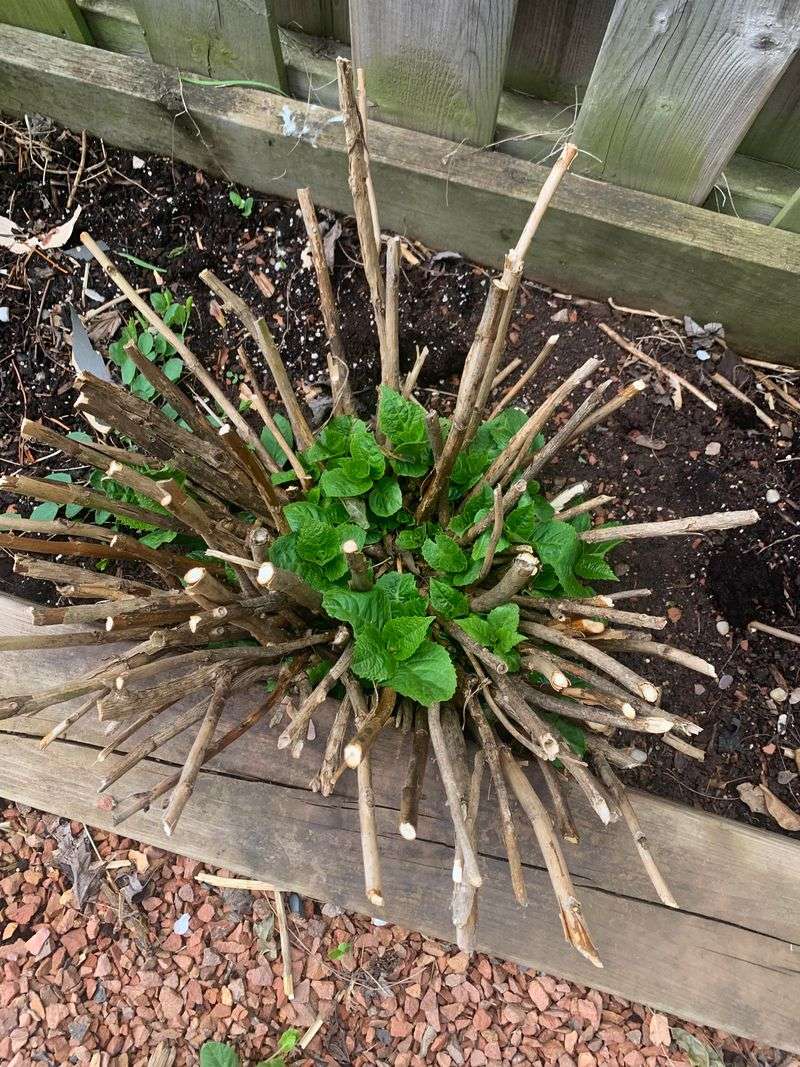Maryland’s unpredictable fall weather can swing from warm afternoons to frosty mornings in a matter of days, and your hydrangeas need proper preparation to survive winter’s chill.
Whether you’re growing bigleaf, panicle, or oakleaf varieties, taking action now protects next season’s blooms and keeps plants healthy. These seven essential tasks will help your hydrangeas transition smoothly into dormancy and emerge stronger when spring arrives.
1. Stop Fertilizing By Late September
Late-season feeding encourages tender new growth that won’t harden off before frost hits. In Maryland, our first freeze typically arrives in late October or early November, leaving little time for shoots to mature.
Your last fertilizer application should happen no later than mid-September. This gives plants enough time to slow down growth and redirect energy toward root development instead.
For me, marking my calendar in August prevents accidental late feeding. Stopping fertilizer helps hydrangeas enter dormancy naturally, which improves their cold tolerance throughout winter months.
2. Prune Dead Wood But Leave Healthy Stems
Dead or diseased branches should be removed now, but hold off on major pruning until you know your variety’s blooming habit. Bigleaf types bloom on old wood, meaning next year’s flowers are already forming on this season’s stems.
Panicle and smooth hydrangeas bloom on new wood, so they’re more forgiving if you accidentally trim too much. Still, I prefer waiting until late winter for heavy pruning.
Right now, just snip away obviously dead canes and anything showing disease. This cleanup improves air circulation and reduces places where pests might overwinter between branches.
3. Apply A Thick Layer Of Protective Mulch
A three to four-inch blanket of shredded bark or compost insulates roots from temperature swings that damage plants more than steady cold. Maryland’s freeze-thaw cycles can heave roots right out of the ground if they’re not protected.
Spread mulch in a wide circle around each plant, keeping it a few inches away from the main stems. Piling it against the base invites rot and provides hiding spots for rodents.
I usually mulch after the first light frost when the ground is still workable. This timing discourages mice from nesting while still giving roots the protection they need.
4. Water Deeply Until The Ground Freezes
Hydrated plants tolerate winter stress far better than thirsty ones, and fall drought is surprisingly common in our area. Even though temperatures drop, roots continue absorbing moisture until the soil freezes solid.
Check soil moisture weekly by sticking your finger two inches down. If it feels dry, give plants a slow, deep watering that reaches the entire root zone.
I keep watering through November unless we get consistent rain. Well-hydrated hydrangeas enter dormancy with reserves that help them bounce back quickly when growing conditions improve in spring.
5. Protect Tender Buds On Bigleaf Varieties
Bigleaf hydrangeas set their flower buds in late summer, and Maryland’s harsh winters can kill those buds before they ever open. Without protection, you might end up with a healthy plant that refuses to bloom come June.
Create a simple cage using chicken wire or stakes, then fill it loosely with leaves or straw. Burlap wrapped around the outside blocks wind without trapping moisture inside.
This extra effort pays off when neighbors wonder why your bigleaf hydrangeas are covered in blooms while theirs produce only leaves. I set up protection after Thanksgiving when plants are fully dormant.
6. Test And Adjust Soil PH If Needed
Fall is the perfect window for adjusting soil chemistry because amendments have months to integrate before spring growth begins. Hydrangeas show their pH preferences through bloom color, with acidic soil producing blue flowers and alkaline soil creating pink ones.
Grab an inexpensive test kit from any garden center and check the pH around your plants. Add sulfur to lower pH or lime to raise it, following package directions carefully.
I test every other year since Maryland soil tends toward the acidic side naturally. Making adjustments now means your hydrangeas wake up to ideal growing conditions when warm weather returns.
7. Clear Away Fallen Leaves And Debris
Leaf litter creates cozy homes for fungal diseases and overwintering insects that attack hydrangeas come spring. Powdery mildew and leaf spot both survive winter on dropped foliage, ready to reinfect new growth.
Rake away leaves from around the base of plants and dispose of any that show signs of disease. Healthy leaves can go in your compost pile or be shredded for mulch elsewhere.
This simple cleanup dramatically reduces disease pressure next season. I do a thorough cleaning once most leaves have fallen, usually around mid-November here in Maryland before snow arrives.

